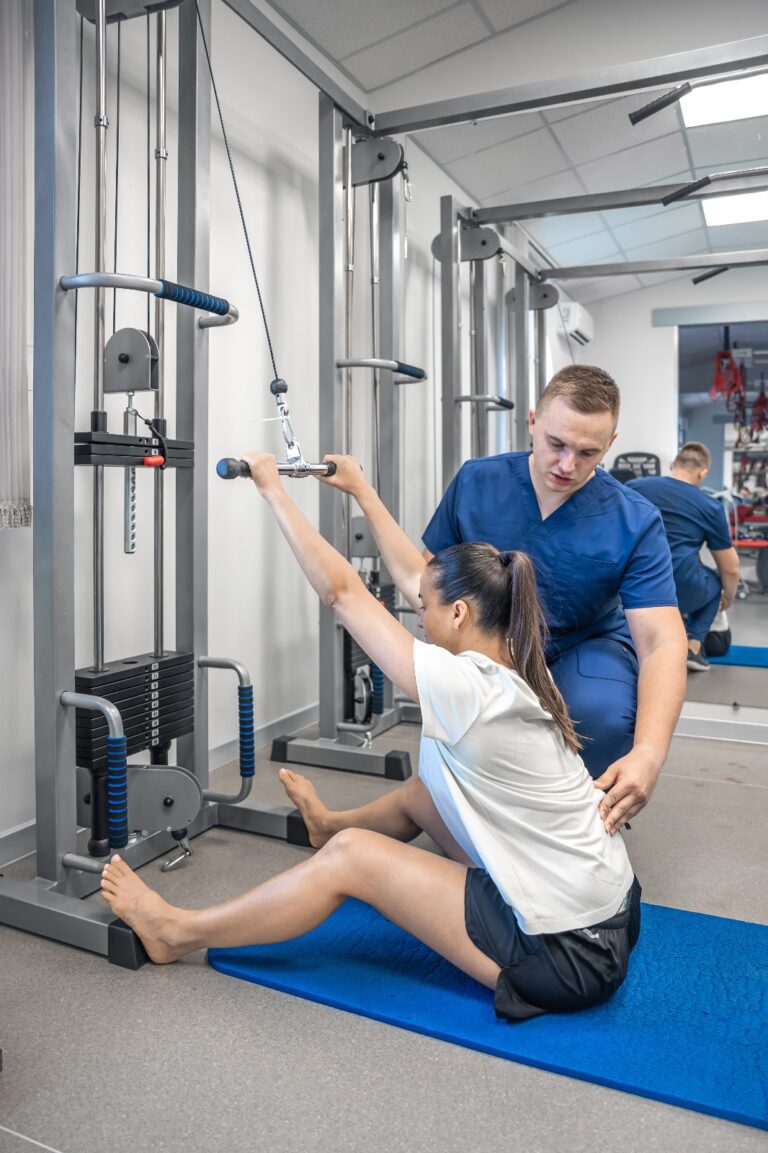Active Rehabilitation
Active Rehabilitation
Active rehabilitation, also known as active physiotherapy or exercise-based rehabilitation, is a form of therapy that focuses on improving physical function and mobility through guided exercise programs. Unlike passive treatments such as manual therapy or modalities (e.g., ultrasound, electrical stimulation), active rehabilitation involves active participation from the patient in performing exercises and functional movements to restore strength, flexibility, balance, and endurance.
Here are some key components of active rehabilitation:
- Assessment: The rehabilitation process typically begins with a comprehensive assessment conducted by a physiotherapist or rehabilitation specialist. This assessment helps identify the patient’s specific impairments, functional limitations, and rehabilitation goals. It may include evaluating movement patterns, strength, flexibility, joint mobility, and posture.
- Individualized Exercise Prescription: Based on the assessment findings, an individualized exercise program is developed to address the patient’s unique needs and goals. The exercise program may include a combination of strengthening exercises, stretching or flexibility exercises, balance training, cardiovascular conditioning, and functional movement patterns tailored to the patient’s condition and level of ability.
- Education and Instruction: Patients receive education and instruction on how to perform the prescribed exercises safely and effectively. This may include proper exercise technique, breathing techniques, body mechanics, and strategies for injury prevention. Patients are encouraged to actively participate in their rehabilitation process and take ownership of their health and well-being.
- Progressive Overload: Active rehabilitation programs are designed to progressively challenge the patient’s physical abilities over time. As the patient’s strength, endurance, and mobility improve, the intensity, duration, and complexity of the exercises may be gradually increased to promote further gains in function and performance.
- Functional Integration: The ultimate goal of active rehabilitation is to improve the patient’s ability to perform daily activities, work tasks, sports, or recreational activities with greater ease and efficiency. Exercises and functional movements are often selected to closely mimic the demands of real-life activities, helping patients transfer their rehabilitation gains to meaningful functional tasks.
- Monitoring and Adjustment: Throughout the rehabilitation process, patients are monitored closely by their healthcare provider to track progress, identify any barriers or challenges, and make adjustments to the treatment plan as needed. This may involve modifying exercise intensity, progressing to more advanced exercises, or addressing any new or recurring symptoms.
Active rehabilitation can be effective for a wide range of musculoskeletal conditions, sports injuries, chronic pain conditions, and post-surgical rehabilitation. It empowers patients to take an active role in their recovery and promotes long-term improvements in physical function, mobility, and quality of life.


